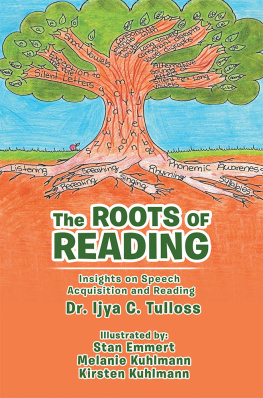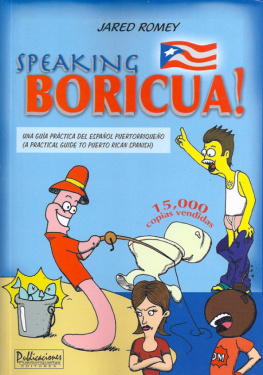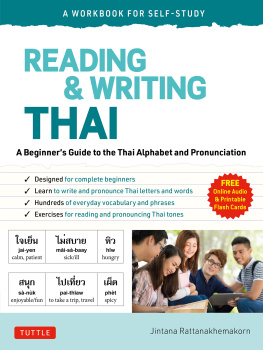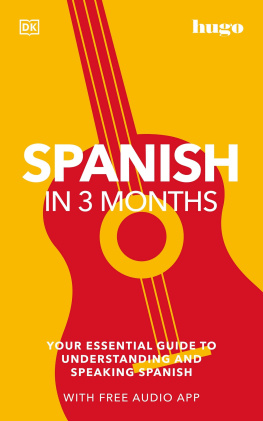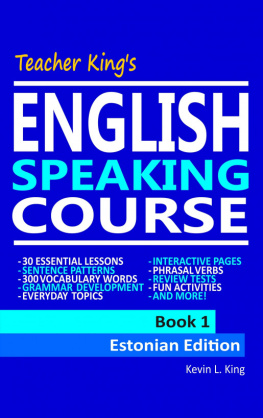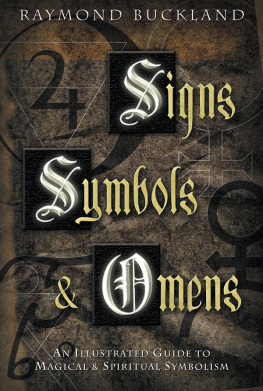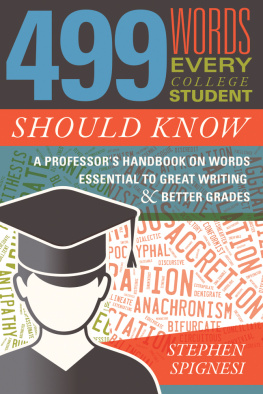THE ROOTS
OF
READING
Insights on Speech Acquisition and Reading
DR. IJYA C. TULLOSS

AuthorHouse
1663 Liberty Drive
Bloomington, IN 47403
www.authorhouse.com
Phone: 1 (800) 839-8640
2019 Dr. Ijya C. Tulloss. All rights reserved.
No part of this book may be reproduced, stored in a retrieval system, or transmitted by any means without the written permission of the author.
Published by AuthorHouse 03/07/2019
ISBN: 978-1-5462-7536-7 (sc)
ISBN: 978-1-5462-7535-0 (hc)
ISBN: 978-1-5462-7537-4 (e)
Library of Congress Control Number: 2019900286
Any people depicted in stock imagery provided by Getty Images are models, and such images are being used for illustrative purposes only.
Certain stock imagery Getty Images.
Because of the dynamic nature of the Internet, any web addresses or links contained in this book may have changed since publication and may no longer be valid. The views expressed in this work are solely those of the author and do not necessarily reflect the views of the publisher, and the publisher hereby disclaims any responsibility for them.
DEDICATION
This book is dedicated to my two sons, Mark and Carlos Tulloss whose love of learning inspired me to be an educator and a writer.
Mom
TABLE OF CONTENTS
Introductory Chapters
Reading and the Learner
Love of Learning Reading Program LLC
How do we teach reading?
Guidelines for design of lessons
Concluding Remarks
I trained as a chemist, earned my MS. in Chemistry at Northwestern University and worked for Abbott Laboratories. With the birth of my first son, my interest shifted to education. I became a certified Montessori teacher in Early Childhood and Elementary Education. After the birth of my second son, nine years later, I founded my own Montessori school, Glencoe Montessori School. I became a certified K-9 elementary teacher in the State of Illinois, earned my doctorate in Early and Middle Childhood Education from Nova Southeastern University.
Coming from a scientific background and entering into a new field of endeavor, I purposely sought out activities that enriched my background in the humanities. These new activities gave me a more balanced background to go into teaching. I engaged in International folk dancing for 10 years, ballroom dancing for 14 years, Two-step dancing, for two years. I sang in the church choir for 12 years and sang in womens barbershop chorus for a year. I rejoined the barbershop chorus five years ago and am currently engaged in singing with the group. Meanwhile I was convinced that communication through speech was an asset so I joined Toastmaster International, a public speaking club.
Following my mothers suggestion to continue studying all throughout life, I picked up courses here and there on cultural anthropology, Adlerian psychology, Theosophy, Kabbalah, and spirituality. My mothers last suggestion was, If you run out of things to study, take up law. I have not embarked on the study of law as yet. Give me some time.
The varied experiences and training have broadened my worldview and enriched my pool of resources to address lifes vicissitudes. I have become passionate in the area of reading and writing. Nothing compares to the joy of witnessing a child reading a whole book all by himself for the first time. Indeed teaching a child to write and read is a gift that opens doors to learning about himself, the world we live in and the people and inhabitants therein.
This book is my gift to all learners so that all may read. Join me in this endeavor.
This book is about learning to read and write or learning to write and read.
A parent, a teacher or a mentor will find this book easy to use and easy to follow with its step-by-step narrative.
With a science background working with test tubes for eight years and now thrown into a Montessori classroom with three-, four-, and five-year olds, I was at a loss on what to do and what I can contribute to the field. Little by little I felt at home in Montessori education. Instead of just washing the line as the taped floor was called, I taught the children to wash the perimeter of the square or the circumference of the circle or the area of the square. I used petals for the sweeping exercise. That was more environmentally correct since I felt bad about playing with rice which we eat.
I learned to sing Over the River and through the Woods for Thanksgiving and Here Comes Peter Cottontail for Easter. I was comfortable with music and dancing. My internship supervisor showed Hungarian dance steps. That perked me up and from that time on I no longer felt like a stranger in that room. I taught the children to sing Bahay Kubo, a Philippine song about my little nipa hut surrounded by various vegetables. To my surprise, the children did not resist learning a song in another language. I felt good that I could teach children and the classroom experience was enjoyable.
I was fascinated with building as many variations as I could make with the red rods. After building the staircase from the shortest to the longest rod, I explored designs that could be made. I could make triangles, rhombi, a sunburst or a maze. I made a fabric box of matching squares for designs such as stripes, polka dot, printed design or plain.
I was looking forward to teaching them language and math. That did not happen during my internship year. The following year, I was the lead teacher of my own class. There was one problem. My assistant became ill and had to quit her job. She was not replaced so I had to work by myself with fourteen children. I could not find time to sit down one-on-one to teach the alphabet with sandpaper letters.
From the lectures at the training program, I learned that children are hungry for words and are sensitive to words at this age. I engaged children in conversations to discuss stories we read. Michael enlightened me with his vocabulary. I told the story about the Seven Chinese Brothers. One brother committed a crime. It was not serious. He was guilty of something that was not too serious. Michael interjected that it was a misdemeanor . Michaels mother was a lawyer. Michael was only four years old.
Pams mother reported that her daughter exclaimed that she was wearing stripes. New vocabulary was evident.
To dismiss the class at the end of the day, I flashed one by one a card bearing childs printed name as I sounded out the first letter followed by the rest of the sounds. I was surprised that such a simple activity meant so much to the class. Parents were excited in telling me that their children were naming the letters at home K for Karen, A for Amanda etc.
I needed someone to help me with teaching the sounds of the alphabet. I approached the director. My idea was to train volunteers who then could come once a week to help. She thought that mothers from the other classrooms would be interested too. We went ahead with our plan, conducted a training session and had a few volunteers trained to help teach the sounds of the alphabet.
Many things happened during the year. Everyone learned something:
The mothers learned the sounds of the letters. This was new to them and they admitted that they would not have learned to say the sounds had they not come to the workshop.
The children learned to sound out the letters. Some picked out a few while others learned to sound out almost all of the letters of the alphabet. Since there was no pressure in the process, I figured out that we would continue with the lessons in the same manner the following year.
I learned about motivation. Some children could not wait until they had their lessons at the sound table. Some were not interested in learning the sounds of letters, others came to honor the invitation to join the teacher at the table.
Next page
